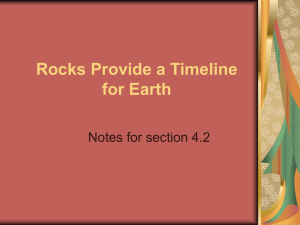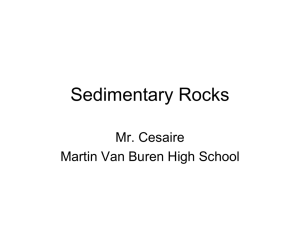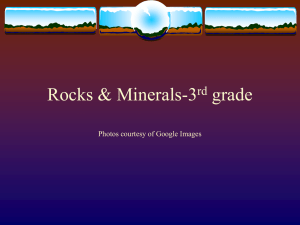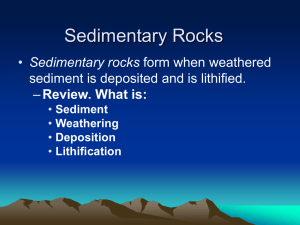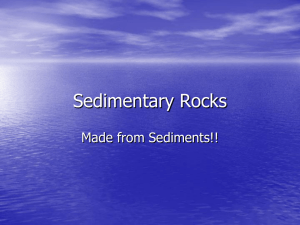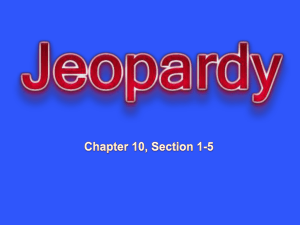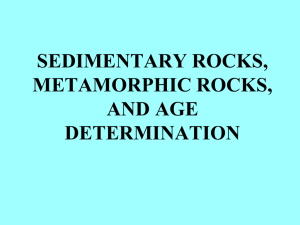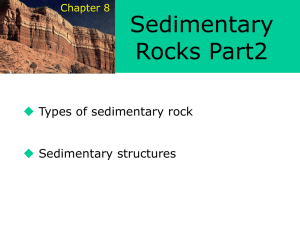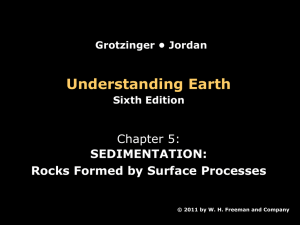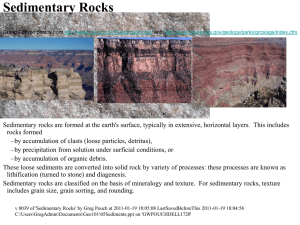Sedimentary Rocks
advertisement
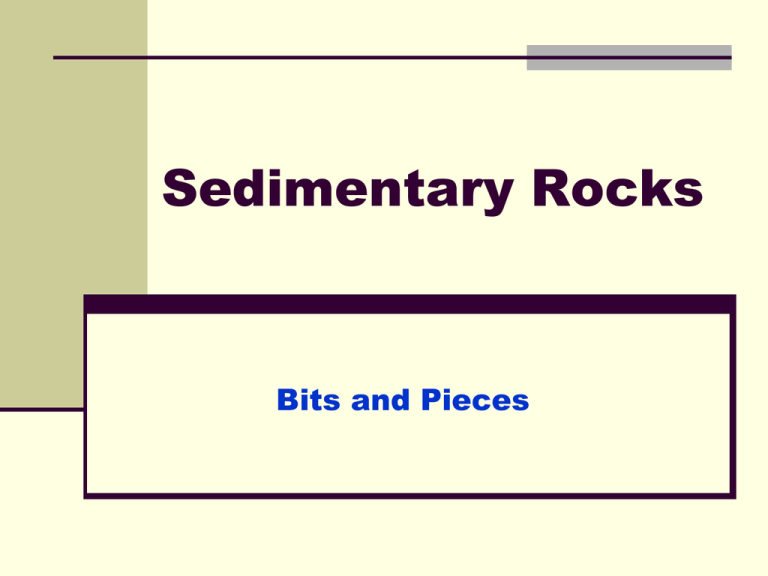
Sedimentary Rocks Bits and Pieces Sedimentary rocks form as sediment is: lDeposited lBuried lCompacted lCemented Sedimentary rocks fall into 3 groups: Clastic/inorganic Organic Chemical Physical Weathering Clastic sediments are produced when rock physically weathers, which means it breaks apart. Big rocks break into smaller rocks. Weathering is an extremely slow process. There are 6 sizes of clastic sediments. Boulders Cobbles Pebbles Sand Silt Clay Particles are collected and transported by running water. http://www.youtube.com/ watch?v=fATA1SOLICo Abrasion Sediments become smoothed and rounded as they bounce along the bottom of the stream and hit against each other. Deposition and Sorting A stream loses velocity when entering quiet waters so its ability to transport sediment decreases. Particles drop to the bottom. This is deposition. Large particles settle first. Other particles settle according to size. Smallest particles last. This is sorting. Burial and Compaction As more sediments accumulate, the bottom ones are buried. This increased weight of the top sediments physically squeezes the lower sediments together which compacts them. Heavy Weight OUCH! Cementation All the waters of the Earth contain dissolved minerals. These dissolved minerals and sometimes clay fill up spaces between the rock fragments and bind them together. This is cementation. Stratification Sedimentary rocks often form in horizontal layers called strata. Fossils These layers or strata often contain fossils. Only sedimentary rocks contain fossils. Fossil Structures Mud cracks and ripple marks give evidence of environment at formation. Organic(Bioclastic)Sediments The remains of plants and animals. The two most common are shells and plant material. Chemical Sediments Chemical sediments form when water evaporates and the materials dissolved in the water precipitate (settle). Bonneville Salt Flats Home of the land speed record. Thrust SSC – 763 mph http://www.youtube.com/watch?v=LKQ-xj5C2m8 Yucca Mountain Nuclear waste depository http://www.youtube.com/watch?v=tbq9a2oyMAo http://www.youtube.com/watch?v=Q41vzLjwZqM Characteristics of Sedimentary Rocks Sedimentary rocks are the most common type of rocks on Earth’s surface. Sedimentary rocks usually form underwater. Sedimentary rocks may contain fossils. Sedimentary rocks often form in layers or strata. Sedimentary rocks are our keys to the past. Nature’s Palette Antelope Canyon Bryce Canyon Mexican Hat Clastic Sedimentary Rocks Breccia – angular Conglomerate - rounded Clastic Sedimentary Rocks Sandstone – can be various size grains. Clastic Sedimentary Rocks Siltstone Clastic Sedimentary Rocks Shale – breaks along bedded planes. Bioclastic Sedimentary Rocks Bituminous coal – plant remains = carbon Bioclastic Sedimentary Rocks Limestone – cemented shell fragments or precipitates of biologic origin = calcite Chemical Sedimentary Rocks Rock salt - Crystalline texture composed of halite. Chemical Sedimentary Rocks Dolostone – Crystalline texture composed of dolomite. Fossil Chemical Sedimentary Rocks Rock Gypsum – Crystalline texture composed of gypsum.


